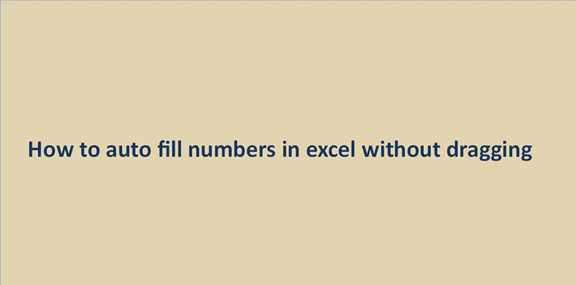If you can use excel the right way, I don't see any need to reach out for your calculator to do the math. Excel just needs some simple formulas and the whole work is done. However, using excel especially if you are new to it can be stressful and time-consuming. Now, most people want to fill numbers in each cell at a time. Although this is the basic knowledge that you learned at school or through your friend, there are several other ways you can perform the task without spending as much time. In this post, I will show you how to autofill numbers in excel without dragging.
What do you do when you have to fill 1-1000 in a column in excel? We can both agree that this can take much of your time and tire you. Your friend told you that you have to use the regular way method of filing these numbers which involve:
Entering 1 in cell A1
Entering 2 in cell A2
Then select both cells and later drag it down to the last cell using the fill handle.
Although this can work the same, sometimes it can be irritating to drag the fill handle to the last cell. It can be a problem especially when you are dealing with many numbers. Now in this post, am uncovering the simplest of all auto methods of doing this. Don't waste a lot of your time, follow the below steps to make it a reality. The above are some of the reasons why you should learn and know all about excel.
Steps to Autofill numbers in Excel Without Dragging
Enter 1 in cell A1 just like you did with the regular method.

Click on home>> editing-fill>>series. You can get a clear picture below.

Now you should make the following selections in the dialogue box.
Type: Linear
Stop value: select 1
Stop value: select the last number you want on your sheet. In our case, select 1000.
Series in: select the row or column where you want the numbers to be inserted. In this case, you select Columns.

Now make sure the selections are as shown in the screenshot above. If all the selections are filled the right way, now it's time to check for the results. Click okay and move on.
This selection will fill the cells A1: A1000. The numbers will be shown down from A1-A1000 which is what you wanted. As I had already started, you can add the numbers on the row instead of the column. To do this, you should select Rows in the series instead of the Columns as it was in our case. There are some instances when you want to start on a number rather than one. In this case, you should fill that number in cell A1 and at the same time select the bottom number.
